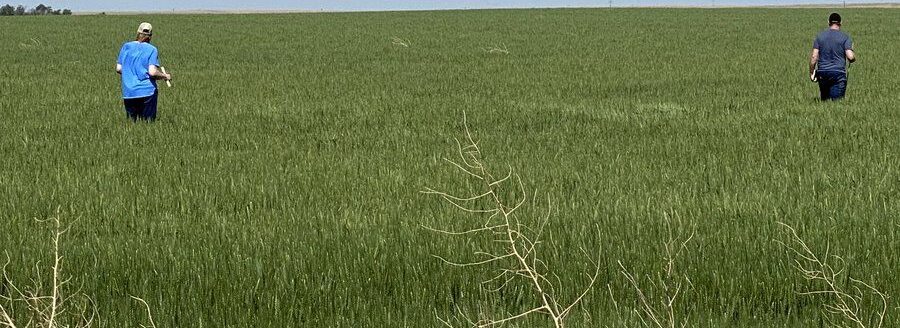Attendees during the Wheat Quality Council’s annual Hard Red Winter Wheat tour saw the give and take of Mother Nature.
Heading into the tour the U.S. Department of Agriculture, on May 1, predicted Kansas will produce about 48 bushels per acre and yield 331 million bushels. Kansas planted about 7.3 million acres, which was up from a year ago. The tour wrapped up May 20. Among highlights reported on May 19 was a general consensus there was a scenario for a yield potential of about 57 bushels per acre, if everything continued on pace.
Growers in far western Kansas that missed out on winter moisture, and spring rains appear to have the toughest stretch. One observer said that some of the worst he saw was in a general line from Goodland to Syracuse. However, east of U.S. Highway 83 it started to perk up and another liked the crop’s potential from Dodge City to Greensburg, although he did see some disease pressure. Another observer also liked his route through west-central Kansas.
Romulo Lollato, an associate professor of wheat and forage production, Kansas State University, said drought and rust diseases continued to be a challenge many growers had to deal with. If the crop did not look promising it made for difficult decision on whether to apply fungicides. Lollato noted that some of the reasons for rust were spotty in many regions, which could also be tied to the drought stress, which can weaken a stand and make it more susceptible to diseases.
Tour-goers, which included members of the media, producers and grain buyers, also observed first-hand moisture that fell in advance and during the tour.
Aaron Harries, vice president of research and operations for the Kansas Wheat Commission and Kansas Association of Wheat Growers, asked about water he observed from recent rains and its impact.
“Wheat does not like standing water,” Lollato said. “It cannot handle it for very long.” Twenty-four to 48 hours is long enough for a crop to start having significant damage, he said.
The tour also included an update from Oklahoma, Nebraska and Colorado.
Mike Schulte, executive director with Oklahoma Wheat, said his state has seen many extremes like its neighboring states. The Panhandle producers are dealing with significant drought pressure that started during seeding last fall and continued in the winter and spring.
Overall, he thought the state would have just under 3 million harvested acres that will average about 37 bushels per acre for a total yield of 110 million bushels.
Producers also are dealing with leaf rust and stripe rust. Growers with adequate to good moisture were able to get some fungicide applied. A significant freeze in early spring will likely impact yield.
Nebraska is expecting a yield of about 47 bushels per acre yield, according to the May 12 National Agricultural Statistics Service report. Winter wheat seedings were about 900,000 acres. Some stripe rust has been found spots in southern regions and similar to Kansas there were extremes noted in moisture. A lengthy harvest season is expected.
Colorado Wheat reports an expected harvest of about 65 million bushels, Harries said. Colorado Wheat is projecting a yield of about 37.3 bushels per acre, he said in providing that organization’s report.
Northeast Colorado appeared to have the best wheat with forecast yields ranging from 22 to 80 bushels per acre on dryland and southeast Colorado was the worst at 5 to 30 bushels per acre as rain came too late to help this year’s crop.
Dave Bergmeier can be reached at 620-227-1822 or [email protected].




